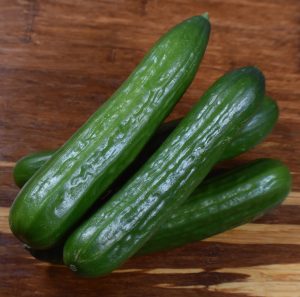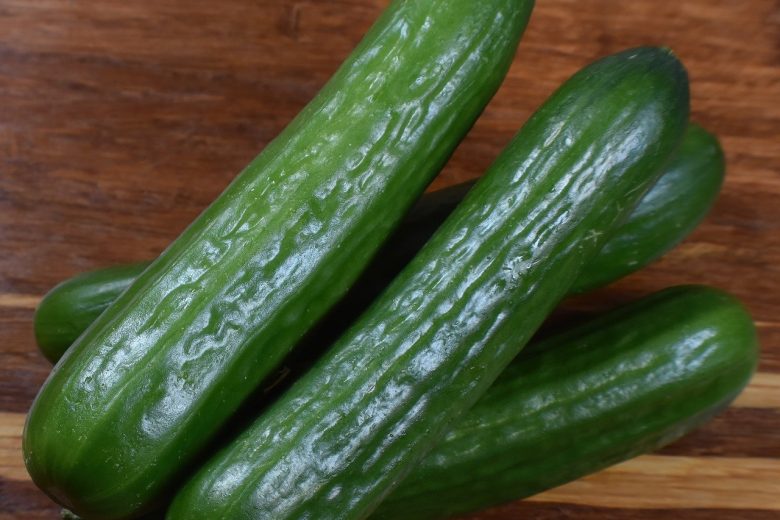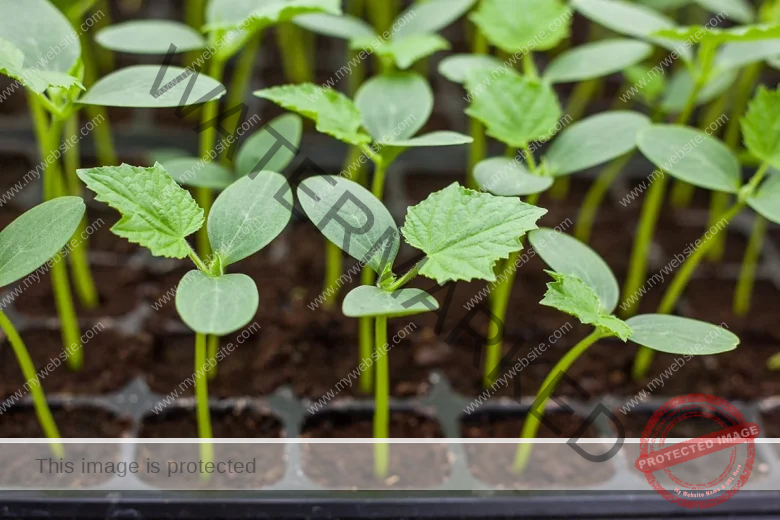Container gardening has gained immense popularity in recent years, allowing individuals with limited space to cultivate their own fresh produce. Among the most rewarding crops to grow in pots are cucumbers.
These versatile vegetables not only thrive in containers but also offer a bountiful harvest when provided with the right care and attention.
Before we continue, let us know what cucumbers are;

Cucumbers come in several different varieties, including slicing cucumbers, pickling cucumbers, and seedless or English cucumbers. Slicing cucumbers are typically larger and are commonly eaten fresh, while pickling cucumbers are smaller and firmer, ideal for pickling and preserving. English cucumbers are longer and seedless, with a thinner skin, making them suitable for slicing and salads.
These vegetables are low in calories and rich in nutrients, including vitamins C and K, potassium, and dietary fiber. Their high water content makes them hydrating and refreshing, particularly during hot weather.
Cucumbers are typically grown on vines and produce elongated fruits with a cylindrical or oblong shape. The skin can vary in color from dark green to light green, depending on the variety. Some cucumber varieties may have spines or bumps on the skin, while others have smooth or ribbed exteriors.
In addition to their culinary uses, cucumbers have been utilized for various purposes throughout history. They have been used in traditional medicine for their potential health benefits, including promoting hydration, aiding digestion, and providing skin benefits when applied topically. Cucumber slices are often used in spa treatments for their soothing and cooling properties.
Overall, cucumbers are versatile, nutritious, and easy to grow, making them a popular choice for home gardeners and a staple in many cuisines around the world. Whether eaten fresh, pickled, or used in skincare routines, cucumbers offer a range of benefits and are enjoyed by people of all ages.
In this comprehensive guide, we’ll delve into the step-by-step process of growing cucumbers in pots, from selecting the ideal containers to harvesting your juicy cucumbers.
Selecting the Right Container:
Choosing the appropriate container is crucial for the success of your cucumber plants. Opt for pots that are at least 18 inches deep and 12 inches wide to provide ample space for root development. Additionally, ensure that the containers have sufficient drainage holes to prevent waterlogging, which can lead to root rot.
Choosing the Perfect Variety:
When it comes to container gardening, selecting the right cucumber variety is essential. Compact or dwarf varieties such as ‘Bush Champion’ or ‘Patio Snacker’ are ideal for pots, as they require less space and produce an abundant crop of cucumbers. Consider factors such as space availability, sunlight exposure, and preferred cucumber type (slicing or pickling) when choosing your variety.
Soil Preparation and Fertilization:
Prepare a well-draining potting mix rich in organic matter for your cucumber containers. A blend of compost, peat moss, and perlite or vermiculite provides the perfect balance of nutrients and moisture retention. Incorporate a slow-release fertilizer or organic compost into the soil before planting to ensure healthy growth and ample fruit production throughout the season.
Planting and Spacing:
Plant cucumber seeds or seedlings in the prepared containers once the danger of frost has passed and the soil temperature reaches at least 60°F (15°C). Place the containers in a sunny location with at least 6-8 hours of sunlight per day. When planting seeds, sow them 1 inch deep and space them 6-12 inches apart, depending on the variety’s recommended spacing. For seedlings, transplant them into the containers at the same depth as their nursery pots, ensuring proper spacing between plants.
Providing Adequate Support:
Cucumber plants are prolific climbers and require support to grow vertically and maximize space utilization. Install trellises, stakes, or cages in the containers to support the vines as they grow. Training the vines to climb vertically not only saves space but also improves air circulation around the plants, reducing the risk of diseases such as powdery mildew.
Watering and Maintenance:
Consistent watering is essential for healthy cucumber plants, especially during the flowering and fruiting stages. Keep the soil evenly moist but not waterlogged, as overly wet conditions can promote root diseases. Water the plants deeply whenever the top inch of soil feels dry, typically every 1-2 days, depending on the weather conditions and container size.
Pruning and Thinning:
Regular pruning and thinning help maintain the vigor and productivity of cucumber plants grown in containers. Remove any damaged, diseased, or yellowing leaves to promote airflow and prevent the spread of diseases. Additionally, thin out overcrowded fruits by snipping off excess cucumbers when they reach a manageable size, allowing the remaining fruits to grow larger and more flavorful.
Pollination:
Cucumbers require pollination to set fruit, and while many varieties are self-pollinating, providing additional assistance can enhance fruit production. Encourage pollination by gently shaking the plants or using a small brush to transfer pollen between flowers. Alternatively, introduce pollinators such as bees and butterflies to your garden by planting nectar-rich flowers nearby.
Pest and Disease Management:
Container-grown cucumbers are less susceptible to pests and diseases than their garden counterparts, but vigilance is still necessary to prevent infestations. Monitor the plants regularly for signs of common pests such as aphids, cucumber beetles, and spider mites, and treat any infestations promptly with insecticidal soap or neem oil. Additionally, practice crop rotation and proper sanitation to reduce the risk of fungal diseases such as powdery mildew and downy mildew.
Harvesting and Storage:
Harvest your cucumbers when they reach the desired size and color, typically 6-8 inches long for slicing varieties and 2-3 inches long for pickling varieties. Use a sharp knife or scissors to cut the cucumbers from the vines, taking care not to damage the plants. Harvest regularly to encourage continuous fruit production throughout the growing season. Store harvested cucumbers in the refrigerator for up to one week, or preserve them through pickling or canning for long-term storage.
When deciding which cucumber variety to grow, there are several factors to consider, including space availability, growing conditions, intended use, and personal preference. Here are some common cucumber varieties to consider:
- Slicing Cucumbers:
- Marketmore: A classic slicing cucumber with dark green skin and crisp texture. It is versatile and suitable for fresh consumption, salads, and sandwiches.
- Straight Eight: Another popular slicing cucumber known for its uniform size and shape. It has a refreshing flavor and is excellent for slicing and snacking.
- Salad Bush: Ideal for container gardening, Salad Bush cucumbers produce compact vines and are perfect for small spaces. They yield crisp, flavorful cucumbers that are great for salads and snacks.
- Pickling Cucumbers:
- Boston Pickling: A heirloom variety known for its firm texture and excellent flavor when pickled. Boston Pickling cucumbers are ideal for making traditional dill pickles.
- National Pickling: A high-yielding pickling cucumber variety that produces uniform fruits with thin skin. It is suitable for both fresh consumption and pickling.
- English or Seedless Cucumbers:
- English Telegraph: Also known as seedless or burpless cucumbers, English cucumbers have thin, tender skin and mild flavor. They are typically longer and seedless, making them ideal for slicing and salads.
- Diva: A hybrid variety of English cucumber known for its crispy texture, thin skin, and sweet flavor. Diva cucumbers are seedless and perfect for slicing or snacking.
- Specialty Varieties:
- Lemon Cucumber: These small, round cucumbers have a pale yellow color and mild, sweet flavor. They are excellent for fresh eating, pickling, and adding visual interest to salads.
- Armenian Cucumber: Also known as snake melon or yard-long cucumber, Armenian cucumbers have a long, slender shape with ridged skin. They have a mild, refreshing flavor and are great for slicing or pickling.
When choosing a cucumber variety, consider your growing conditions, such as available space, sunlight exposure, and climate. Additionally, think about how you plan to use the cucumbers—whether for fresh consumption, pickling, or specialty dishes. Experimenting with different cucumber varieties can add variety to your garden and culinary creations, so don’t be afraid to try something new!
There are numerous online retailers where you can purchase cucumber seeds. Here are some popular options:
Burpee:
Burpee is a well-known seed company offering a wide variety of cucumber seeds, including slicers, picklers, and specialty types. Their website is user-friendly, and they often provide detailed descriptions and customer reviews for each seed variety.
Johnny’s Selected Seeds:
Johnny’s Selected Seeds is a reputable supplier of high-quality vegetable seeds, including cucumbers. They offer a diverse selection of cucumber varieties suited for different growing conditions and culinary purposes.
Seed Savers Exchange:
Seed Savers Exchange specializes in heirloom and open-pollinated seeds, including a selection of cucumber varieties with unique flavors and characteristics. They focus on preserving genetic diversity and heritage varieties.
Baker Creek Heirloom Seeds:
Baker Creek Heirloom Seeds offers a wide array of heirloom cucumber seeds, including rare and unusual varieties from around the world. Their catalog features colorful and flavorful cucumbers that are sure to add interest to your garden.
Territorial Seed Company:
Territorial Seed Company provides a diverse range of cucumber seeds, including hybrids, heirlooms, and specialty varieties. They offer detailed growing information and tips to help you succeed in your cucumber-growing endeavors.
Park Seed:
Park Seed offers a selection of cucumber seeds suitable for home gardeners, including slicing, pickling, and specialty types. They often provide special offers and discounts for bulk seed purchases.
Amazon is a convenient option for purchasing cucumber seeds, with a wide variety of options available from different sellers. Be sure to check customer reviews and product descriptions to ensure the quality of the seeds.
Local Nurseries:
Many local nurseries and garden centers also sell cucumber seeds, particularly during the spring planting season. Supporting local businesses can be a great way to find regionally adapted varieties and receive personalized gardening advice.
Before making a purchase, consider factors such as your location, growing conditions, and preferred cucumber varieties. Read product descriptions carefully, and don’t hesitate to reach out to the seller or manufacturer if you have any questions about the seeds.
Can you grow cucumbers in a pot?
Yes, cucumbers can be successfully grown in pots or containers, making them an excellent choice for container gardening. Here are some tips for growing cucumbers in pots:
- Choose the Right Container: Select a large container that is at least 18 inches deep and 12 inches wide to provide ample space for the cucumber roots to grow. Ensure that the container has drainage holes at the bottom to prevent waterlogging.
- Select a Suitable Cucumber Variety: Look for compact or dwarf cucumber varieties that are well-suited for container gardening. These varieties typically produce smaller plants and are better adapted to confined spaces. Examples include ‘Bush Champion’, ‘Patio Snacker’, and ‘Salad Bush’.
- Use Quality Potting Mix: Fill the container with a high-quality potting mix that is well-draining and rich in organic matter. Avoid using garden soil, as it may compact in containers and hinder root growth. A blend of compost, peat moss, and perlite or vermiculite works well for container-grown cucumbers.
- Provide Adequate Support: Cucumber plants are vine climbers and will benefit from support structures such as trellises, stakes, or cages. Install the support system in the container at the time of planting or shortly afterward to avoid damaging the roots later on. Training the cucumber vines vertically saves space and improves air circulation around the plants.
- Planting and Spacing: Plant cucumber seeds or seedlings in the container once the danger of frost has passed and the soil temperature is consistently warm. Follow the spacing recommendations provided for your chosen cucumber variety, typically spacing plants 6-12 inches apart. Plant seeds at a depth of about 1 inch and water thoroughly after planting.
- Provide Adequate Sunlight: Place the container in a sunny location where the cucumber plants will receive at least 6-8 hours of direct sunlight per day. Cucumbers thrive in full sun and require ample light to produce healthy foliage and abundant fruits.
- Watering and Fertilizing: Keep the soil consistently moist but not waterlogged, as cucumbers prefer well-drained soil. Water the plants deeply whenever the top inch of soil feels dry, typically every 1-2 days, depending on weather conditions. Fertilize the plants regularly with a balanced fertilizer or organic compost to support healthy growth and fruit production.
- Pruning and Maintenance: Regularly prune and thin out cucumber plants to remove any damaged or overcrowded foliage. This helps improve air circulation and reduces the risk of diseases such as powdery mildew. Monitor the plants for pests and diseases, and take appropriate measures to control them if necessary.
By following these guidelines, you can successfully grow cucumbers in pots or containers and enjoy a bountiful harvest of fresh, homegrown cucumbers, even in limited space.
What is best soil for cucumbers in pots?
Cucumbers thrive in loose, well-draining soil that is rich in organic matter. When growing cucumbers in pots, it’s crucial to choose the right soil mix to promote healthy growth and productivity. Here’s a recipe for a suitable potting mix for cucumbers:
Ingredients:
- Potting soil: Use a high-quality potting mix that is lightweight and well-draining. You can either buy a pre-made potting mix or create your own by combining equal parts of peat moss, perlite, and compost.
- Compost: Compost adds nutrients to the soil and improves its structure. You can use homemade compost or purchase it from a garden center.
- Perlite or vermiculite: These materials help to improve drainage and aeration in the soil.
- Organic fertilizer: Choose a balanced organic fertilizer with a similar N-P-K ratio (nitrogen, phosphorus, potassium) such as 5-5-5 or 10-10-10.
Instructions:
- Start by filling your pot about two-thirds full with potting soil.
- Add a layer of compost on top of the potting soil, about 1-2 inches thick.
- Mix in a handful of perlite or vermiculite to improve drainage and aeration.
- Sprinkle a small amount of organic fertilizer evenly over the soil surface.
- Mix the soil, compost, perlite, and fertilizer together thoroughly.
- Fill the remainder of the pot with the soil mix, leaving enough space at the top for watering.
Tips for maintaining the soil:
- Keep the soil consistently moist, but not waterlogged. Cucumbers require regular watering, especially in hot weather.
- Monitor the soil pH, which should ideally be between 6.0 and 7.0 for optimal cucumber growth.
- Consider adding a layer of mulch on top of the soil to help retain moisture and suppress weed growth.
- Feed your cucumber plants with a liquid organic fertilizer every 2-4 weeks to provide them with essential nutrients throughout the growing season.
By using this potting mix and following these tips, you can create an ideal environment for growing cucumbers in pots, leading to healthy plants and a bountiful harvest.
Pots to Buy for your Cucumber Garden

Buy Now

Buy Now
Conclusion:
Growing cucumbers in pots is a rewarding endeavor that allows even the smallest of spaces to yield a bountiful harvest of fresh, crunchy cucumbers. By following the steps outlined in this guide and providing proper care and maintenance, you can enjoy a season-long supply of homegrown cucumbers straight from your own container garden. Whether you’re a novice gardener or a seasoned green thumb, container gardening offers endless possibilities for growing your favorite vegetables, including the versatile and delicious cucumber.

